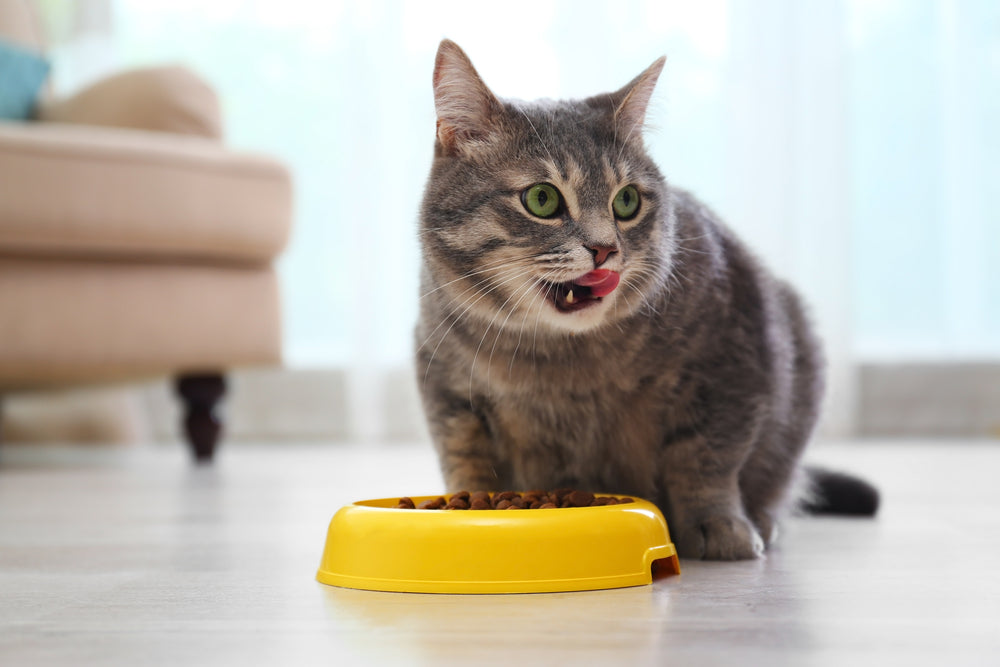Outdoor Pet Safety

Once upon a time, our pets frolicked freely in their natural habitat – the great outdoors. Nowadays our domesticated pets enjoy the comforts of the great indoors around the clock, only venturing outside for scheduled potty time. With our pets spending the majority of their time indoors, outdoor safety, unfortunately, has lost its importance. In a world where no cars or pesticides could harm our furry friends, we could leave our pets to come and go as they please. However, as reality would have it, this pet utopia doesn’t exist.
Beyond the Home’s Interior
According to the American Pet Product Association (APPA), it is estimated that the total U.S. pet industry expenditures come in at $60.59 billion.1 Now that’s some serious pet love! Imagine precious Isabella, a Miniature Schnauzer, enjoying filet mignon and brown rice while sitting at her matching monogrammed dog chair and table. Yes, dearest parents of Isabella, you know who you are! Remember caring for pets extends beyond the home’s interior.
Bustling City or Rural Settlement
Some fences have weak areas; dogs can dig under, and jump over and some clever dogs even know how to work a latch! Dogs can find the craziest ways to escape when they are set on a goal! When they do, your supposedly safe neighborhood can become a dangerous place. If you’re not able to purchase a fence for your yard, containment products such as Aspen Pet® Tie-outs and Stakes are great for dogs that stay outdoors, giving them the freedom they crave while keeping them safe in the absence of a fence.
Another great way to keep your dog safely contained is with the help of a shelter. Not only are shelters ideal for protecting your dog from the elements, but shelters are also wonderful for providing a place of refuge. A dog’s instinct is to seek out a sanctuary when tired, stressed, or frightened. Petmate's Indigo is a top-of-the-line igloo-shaped dog house that provides the perfect place for your dog to get away from it all. We also carry a variety of other dog house styles, such as cabins and more, so you can find a safe retreat that fits your dog's preferences and personality.
Whether you live in a bustling city that never sleeps or a rural settlement that always does, we all want to think that our neighborhoods are safe havens for our pets. As responsible pet parents, we should all be aware of hidden dangers that may be lurking in our neighborhoods.
It’s a jungle out there, pet parents! Take heed of the following outdoor dangers.
6 Outdoor Dangers
- Cars. Trucks. SUVs. Oh my! As human activity increases with soaring overpopulation and an increasing number of vehicles, more than one million animals die each day on roads in the United States2. No matter your dog’s IQ, if a squirrel runs across the road or something yummy lies just over those yellow lines he will instinctively go for it.
- Common Outdoor Plants. Just to name a few… Lilly of the Valley, Iris, Autumn Crocus, Rhubarb, Azaleas, Rhododendrons, Oak Trees, Cherry Trees, and even those harmless-looking Buttercups are just not safe for pets to ingest.
- Parasites. Fleas aren’t just itchy pests. In some pets, their bites can cause extreme skin irritation and infection. They can multiply until you’ve got an infestation in your house or yard, and once they’ve multiplied, they can be difficult to exterminate. Fleas can also cause fatal anemia in some dogs3. Ticks can cause Lyme disease, canine ehrlichiosis, canine anaplasmosis, and Rocky Mountain spotted fever3. Heartworms, transmitted through mosquito bites, can kill a dog if left untreated3.
- Pesticides. From rodent poison to an open bag of lawn fertilizer, your lawn may be safe, but pesticides that neighbors use may not be! Also, plant foods, antifreeze, de-icers and some types of mulch can be harmful if ingested.
- Predators. Not only can your dog be attacked by a wild animal or a not so friendly neighborhood dog – your dog can potentially also prey on other animals. The neighbor’s cat or a harmless groundhog could easily become a victim. Wild and domestic animals can carry disease and so pose other health threats for your pet as well.
- Lost or Stolen. Sadly, many dogs wander far away from home and become lost. It is estimated that 1 in 3 pets will get lost during their lifetime. Ten million pets get lost every year4. Pets are also stolen right from their yards every year. There are many reasons this happens – for profit, dogfighting, and for laboratory use – to name a few.
Follow this safety checklist to prevent these things from happening to your pet.
Outdoor Safety Checklist
- Never intentionally let your dog loose on his own.
- If you have a fenced-in yard, check it over periodically for weak areas or places your dog has dug out. Repair as needed. Your fence should be high enough and strong enough to secure your pet.
- Always walk your dog on a sturdy leash and use the handle, should your dog give you a good pull unexpectedly.
- Check your yard for plants that may be unsafe. Check neighbors’ yards as well.
- You can find many effective products to protect your dog from parasites and parasite-related diseases. Ask your veterinarian for help choosing and using the right products for your dog.3
- Make sure chemicals and other harmful materials are not at ground level in your yard or garage. Secure them and place them out of your pet’s reach.
- Spay or neuter your pet! This is proven to prevent pets from wandering off to find a mate.
- Make sure that your dog gets enough regular exercise so that he is not so determined to escape.
- If you place your dog on a tie-out, make sure it is a suitable strength for your pet’s size.
- Most importantly – JUST BE AWARE. You can never be 100% safe, but by being an educated, vigilant pet parent you can provide your beloved companion with a secure outdoor environment and have peace of mind knowing that he is as safe as can be!
- Always make sure that your dog is wearing the proper identification on his collar. This can be achieved by keeping up to date tags visibly hanging from your dog’s collar.
Sources:
- http://www.americanpetproducts.org/press_industrytrends.asp
- https://www.psychologytoday.com/blog/animal-emotions/201007/animals-and-cars-one-million-animals-are-killed-our-roads-every-day
- https://www.aspca.org/pet-care/virtual-pet-behaviorist/dog-behavior/safety-great-outdoors
- http://microchip.homeagain.com/alleviating-concerns.html
Previous article

Next article

Related posts
View all-

Wet Vs. Dry Cat Food: Which is Better?
As a caring cat owner, you always want the best for your furry friend, especially with their food. You typically have two choices: dry cat food in a bag or canned wet food. Whether you've just brought home a new kitty or are looking to transition to a new food, the decision process can be overwhelming, and understanding the impact of each on your cat's diet is essential. Read Article -

Celebrate National Pet Week: Fun Ideas to Celebrate with Your Pet
National Pet Week is right around the corner, so it's time to plan how you're going to celebrate! While we're sure you celebrate your pet all day every day... Read Article -

5 Simple Tips to Make Sure Your Cat Drinks Enough Water
Ensuring your cat stays hydrated is important, but it can be challenging since many cats don't drink enough water. Dehydration can lead to kidney disease and other health issues. Fortunately, you can encourage your cat to drink more with a few simple changes. Read Article



